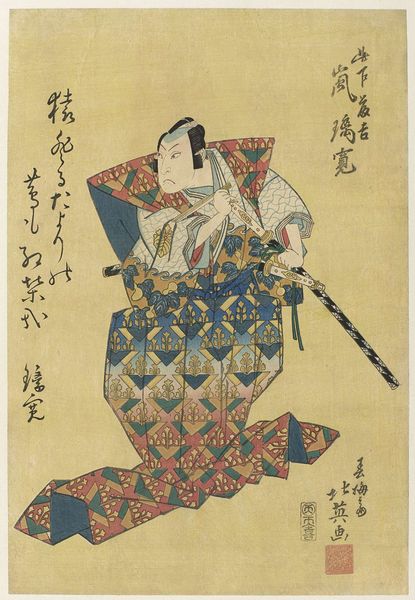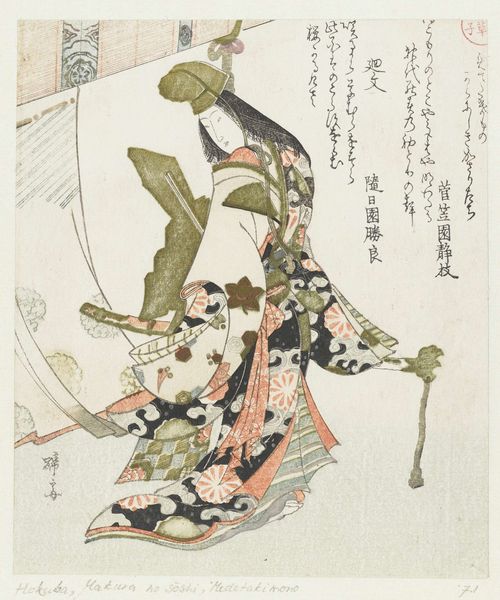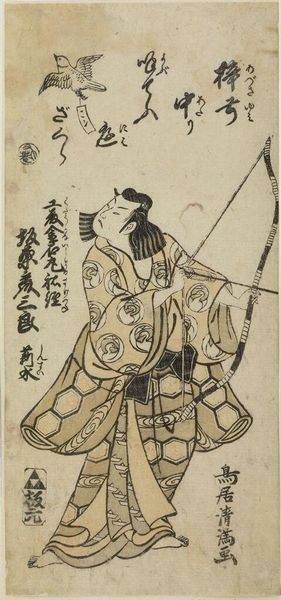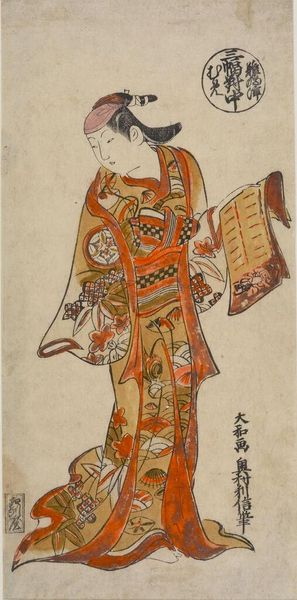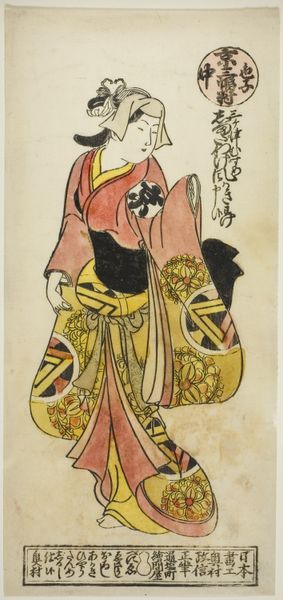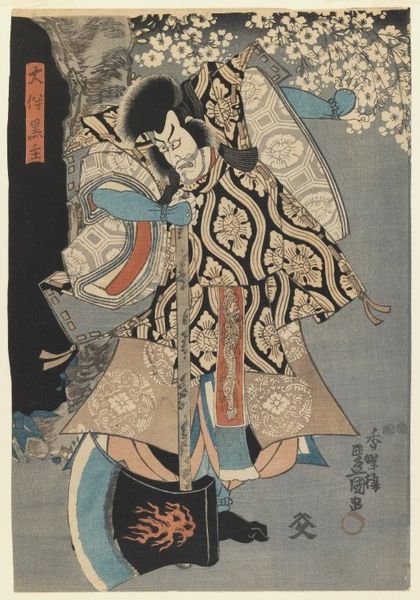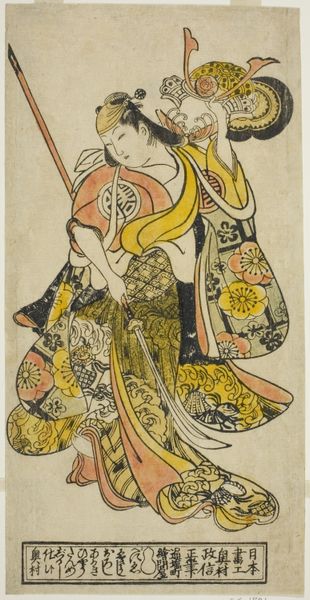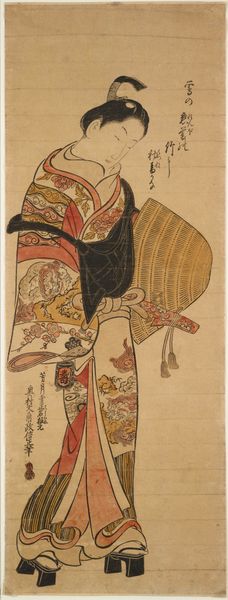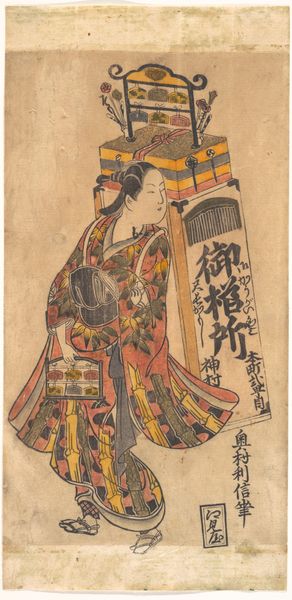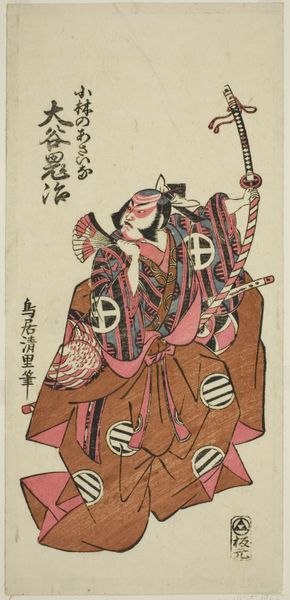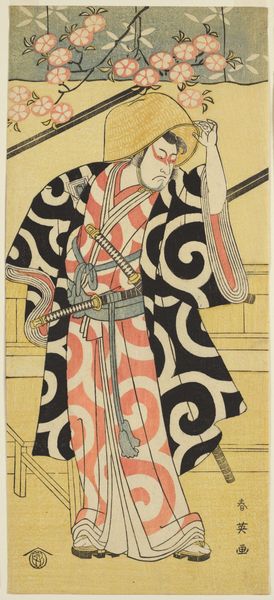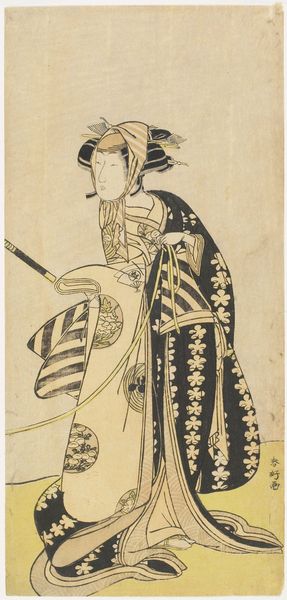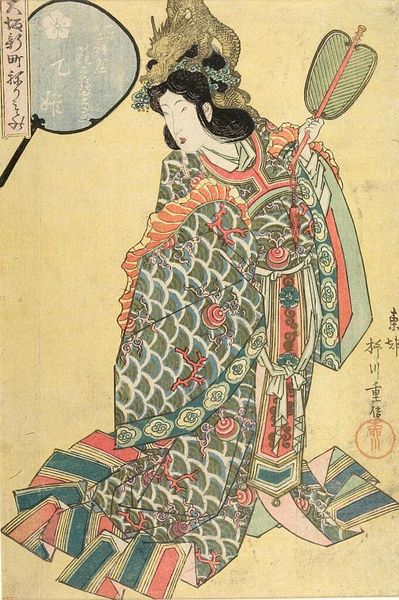
print, woodblock-print
#
portrait
#
ink painting
# print
#
ukiyo-e
#
figuration
#
woodblock-print
#
watercolor
Dimensions: height 678 mm, width 244 mm
Copyright: Rijks Museum: Open Domain
Curator: This is "Young Man Dressed as a Komuso (Begging Monk)" a woodblock print by Okumura Masanobu created around 1740-1745, a lovely example of Ukiyo-e. Editor: It strikes me as very subdued, almost melancholic. The colors are muted, and the figure’s downward gaze emphasizes that introspective mood. Curator: The image plays with gender and social roles. The figure is, in fact, a young man, though he’s dressed as a Komuso, who were traditionally mendicant monks, but also often spies for the Tokugawa shogunate. This figure complicates easy categorization. The intersection of class, gender and espionage fascinates me here. Editor: Yes, and visually, the layered robes are quite compelling, particularly the interplay of light and shadow. I appreciate the artist’s attention to line, particularly how it defines the curves of the figure. Notice the subtle tonal variations, too. Curator: Masanobu was very involved in the social milieu of Edo-period Japan, where such gender bending, especially within theatrical contexts, was socially transgressive and exciting. How might his audiences interpret such visual signs and symbols related to male persona, performance, and even vulnerability? The Komuso basket hat is another disguise in itself—obscuring the face and the identity of this male figure, allowing for free play within his contemporary society. Editor: The hat’s woven texture really enhances the visual rhythm of the entire composition, creating a powerful visual interest that directs the eye and amplifies this very human scene. There's also the compositional use of space—the negative space accentuating the figure’s form, for example. Curator: Looking through a contemporary lens allows us to consider the politics of identity here; especially performance, masquerade, even passing that has an intriguing lineage to present day drag and queer artivism. Editor: Ultimately, it’s the formal elegance that truly captivates— the simple beauty and the considered composition and delicate lines all combined in a quiet visual strength. Curator: For me, the brilliance lies in its power to question gender and power structures. A very insightful snapshot of Japan's Edo period.
Comments
No comments
Be the first to comment and join the conversation on the ultimate creative platform.
